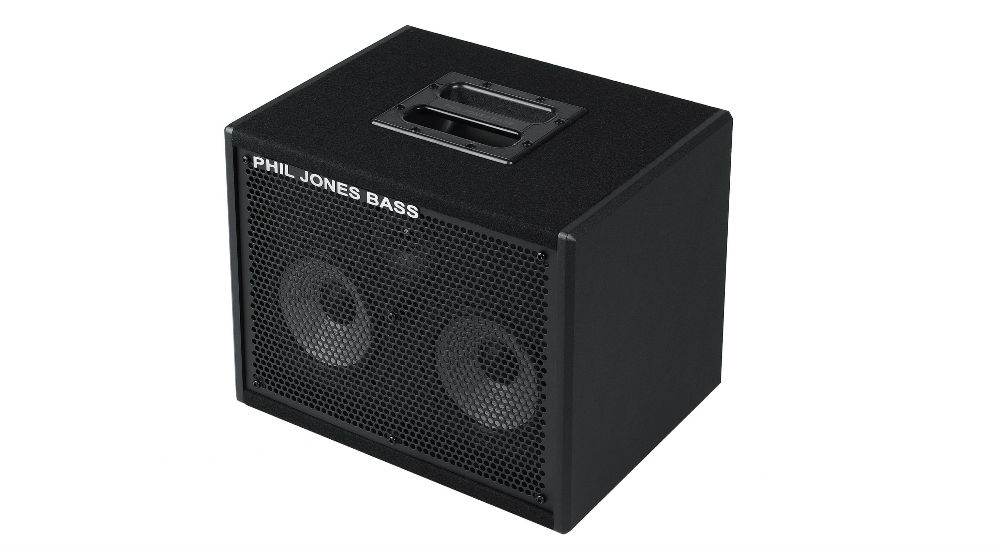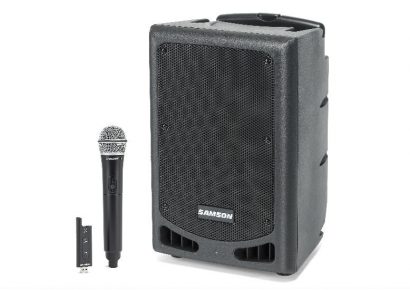Traditional amplifier head and cabinet players monitor at the mercy of their environment, muffled as they attempt to stand as close to their amp as they can to get as direct a sound as possible from the cabinet. In-ear monitor users take the alternative route and give in to trebly, harsh signal from their in-ears. Phil Jones Bass, in an endless quest to solve the little issues that we as musicians face, have produced an onstage solution for bass. The Phil Jones Bass Ear Box, a little dual-driver speaker enclosure is an onstage but out-of-the-way monitor designed to give you the attack and articulation you need to play your best every gig that won’t be affected by room acoustics, nor will it bleed heavily into other sound sources on a stage.
The Phil Jones Bass Ear Box is a small piece of gear that weighs in at about a kilo. Dual Phil Jones Bass Neodymium magnet 12ohm drivers push sound from 250Hz up to 20kHz out at ear height once they are mounted to a vertical microphone stand and plugged in via a Neutrik NL 4 cable. The drivers are mounted inside a sleek, classily finished black splattered box, which will easily hide the monitor away on side of stage while it’s doing its job. Measuring about 18cm x 10cm x 15cm and inconspicuously finished and designed, the Ear-Box can hide away on a dark stage once integrated into your setup. It can handle heads up to 1000 watt RMS, so it will be easily integrated into almost any rig.
Straight front bass cabinets (besides 810s that do reach head height, but are too hefty to cart around to most gigs) usually blast sound to a bass players legs or feet. The Ear Box won’t reproduce a boomy, muffled low end – just the attack and articulation you need to hold down your playing and anchor the band. In a busy club or noisy bar, the mids and highs are the problem area as it becomes messy and mixed in with chatter and background noise; this is where the Ear Box shines. An EQ before the Ear Box itself can further attenuate frequencies and really hone in on what you need to hear. This product serves the user, but spoils the band with a well-balanced stage sound because you can hear the sounds you need onstage, and there’s no need to tweak EQ, spoil your tone for the audience, or turn up your amp and ruin the onstage mix.
The Phil Jones Bass Ear Box really is an entirely new product, but one we’ve needed for a long time. A large inconvenience, and a grey area, between being at the mercy of onstage monitors or in-ear systems has been fixed. The box is inconspicuous enough to hide away, even at the recommended head height and remain hidden. The band won’t hear your monitor unless it’s directed at them, so you’ve got your own little secret weapon. You can hear the attack and intricacies of your playing for better or worse, even when crowd noise is at a high. The Ear Box is designed for smaller clubs and gigs, such as bars, cafes or even little outdoor shows, and while it won’t compete with a blasting drummer in a metal club, it’ll keep you monitoring confidently for pretty much everything else.

